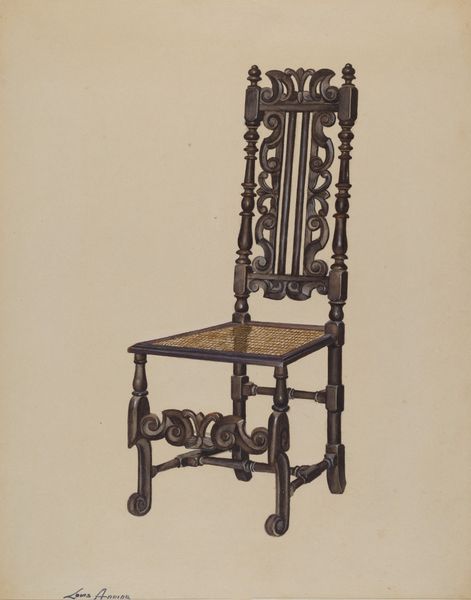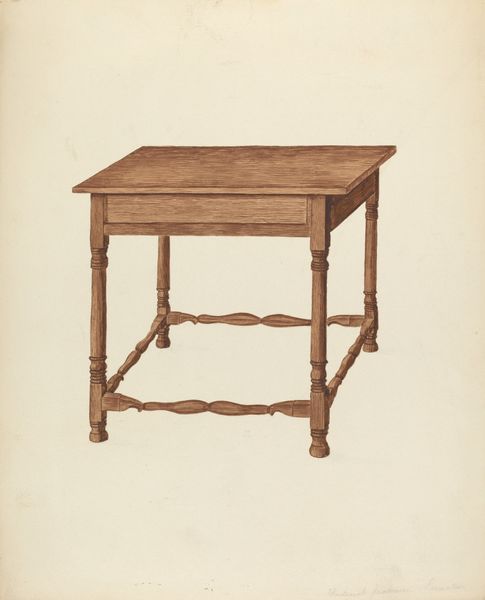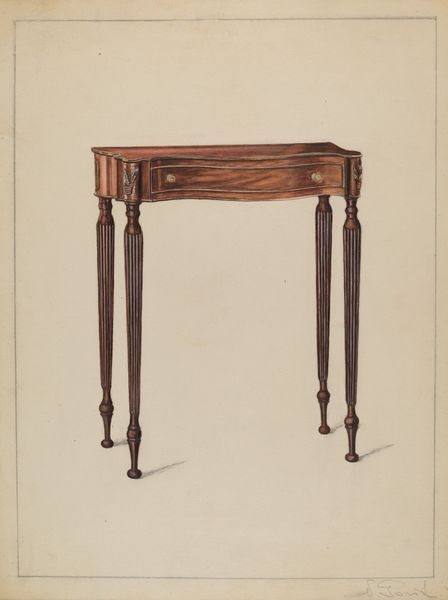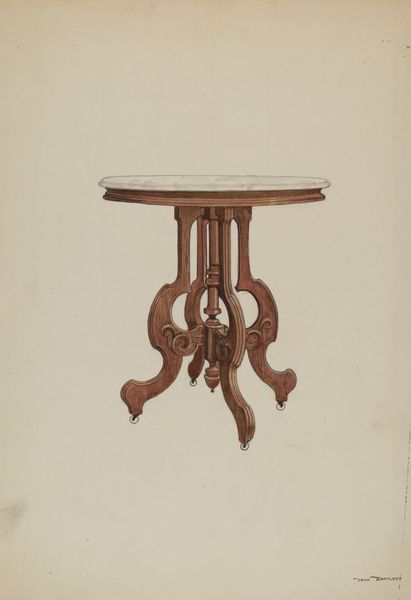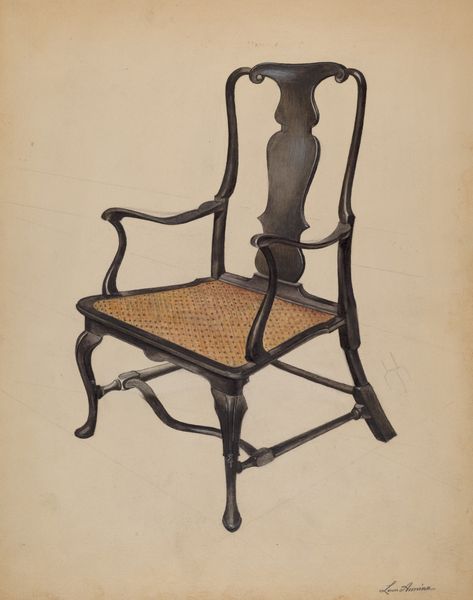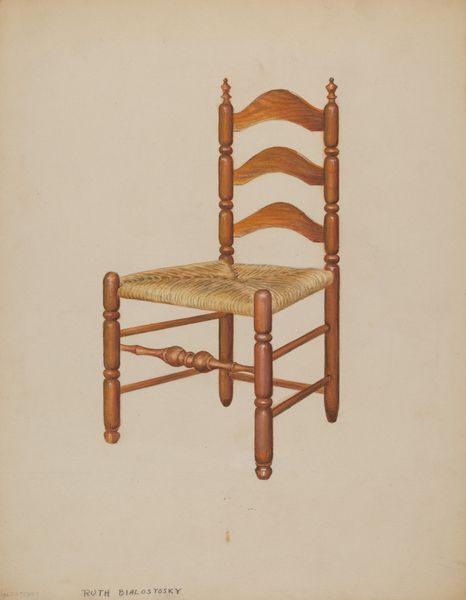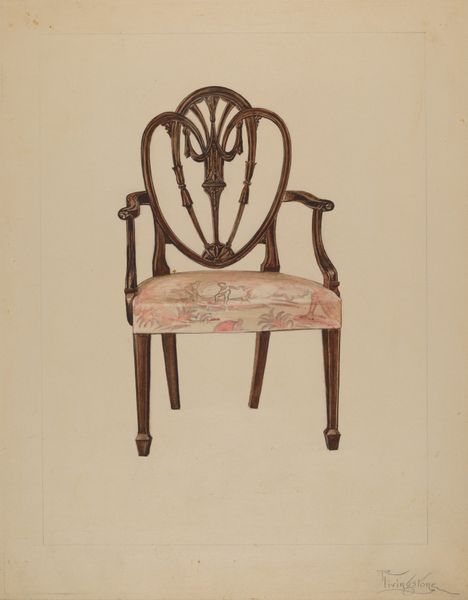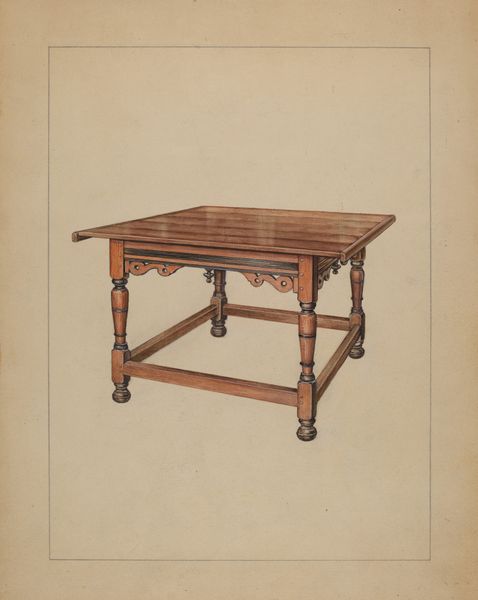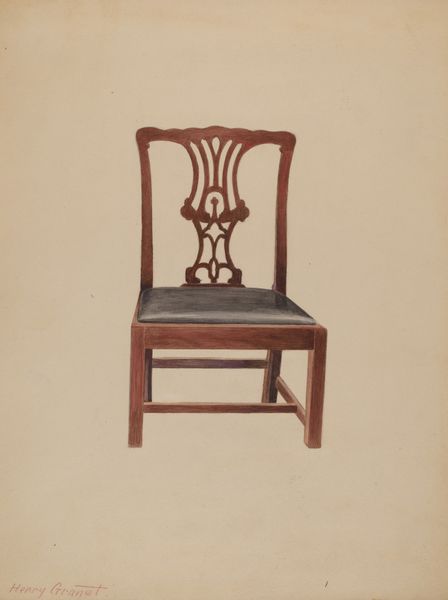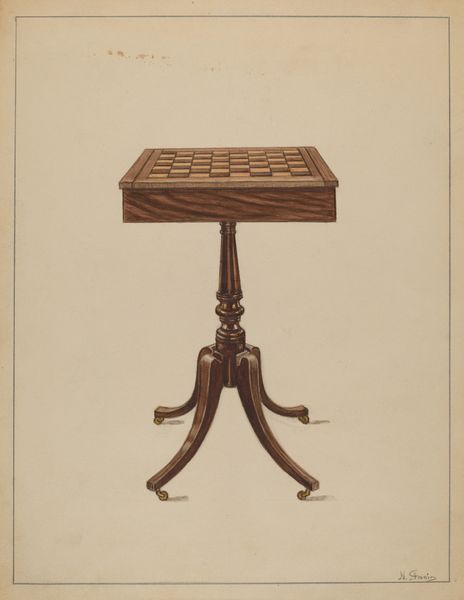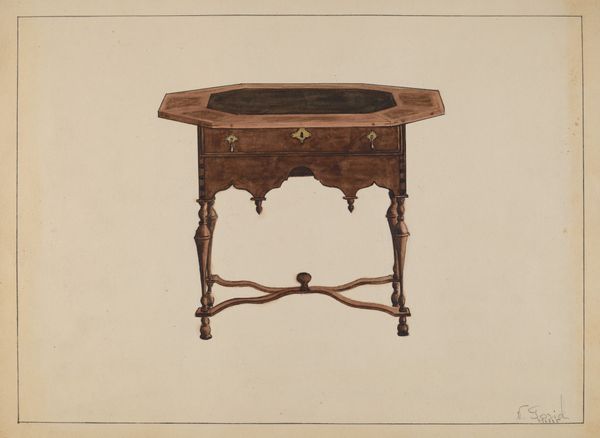
drawing, watercolor
#
drawing
#
watercolor
#
academic-art
#
watercolor
Dimensions: overall: 45.5 x 35.7 cm (17 15/16 x 14 1/16 in.) Original IAD Object: 27 1/2" high; 25" long; 16" wide
Copyright: National Gallery of Art: CC0 1.0
Curator: Clyde Cheney’s watercolor and ink drawing of a sewing machine, dated around 1938, presents a fascinating object. It's so meticulously rendered, almost technical in its detail. Editor: My initial reaction is… loneliness. The pristine white background amplifies the solitude of this utilitarian object. The intricate metalwork, so lovingly depicted, seems almost a memorial to a bygone era of domestic industry. Curator: I see your point. The sewing machine, often associated with domesticity and women's work, becomes isolated here, elevated almost. Cheney has captured its materiality beautifully. Consider the wood grain of the tabletop versus the filigree ironwork, each given such careful attention. And those repeating patterns in the cast iron, referencing a kind of manufactured ornamentation intended to add aesthetic value to a tool of production. Editor: There’s a fragility, too, despite the machine's obvious functionality. It's as if Cheney is acknowledging the slow obsolescence of this particular piece of technology, capturing a moment of quiet dignity before it's relegated to a dusty attic or, eventually, the antique shop. The watercolor adds to the wistful quality. Curator: Absolutely. This artwork, rendered during the late Depression era, touches on larger themes of labor, value, and consumption. The sewing machine, in many ways, symbolizes a kind of self-reliance, of creating something useful from raw materials at a time when jobs were scarce and resources limited. Editor: It also highlights the dichotomy between the handmade and the machine-made. A watercolor of a machine. Isn’t that delightful? As an artist, I am curious about the artist’s creative intent; I bet Cheney was interested in the texture of the machine versus his painting tools: It’s such a strange but appealing juxtaposition! Curator: I agree. The act of meticulously rendering this machine by hand further complicates our understanding of labor. The drawing becomes its own form of productive work. Editor: Yes, this sewing machine, a still-life now preserved in pigment and paper. It invites contemplation, not just on the beauty of the object, but on all it represents—human effort, innovation, and the relentless march of time.
Comments
No comments
Be the first to comment and join the conversation on the ultimate creative platform.

